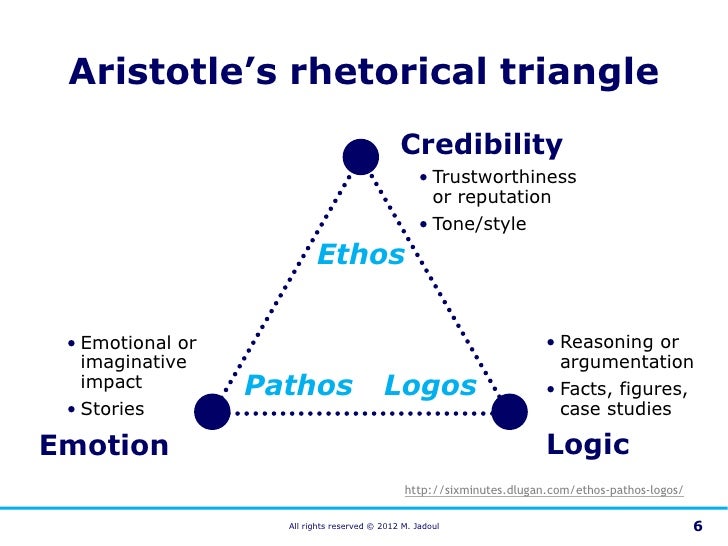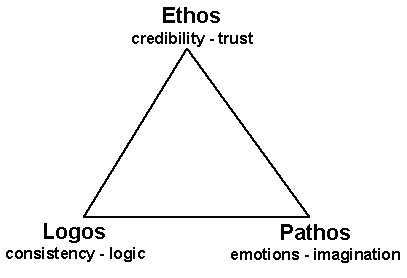

We can see an example of how these three types of appeal interact in a speech by former First Lady and Secretary of State Hillary Rodham Clinton to the fourth World Conference of the United Nations.

Pathos: The speaker appeals to the audience’s emotions, using emotional language, sensory images, and anecdotes. The speaker also tries to build a bridge to the audience by using first-person plural pronouns (we, us). Ethos Ultimately, ethos is all about trust. Pathos means experience or sadness and it is an appeal to emotion. Logos means reason and it is an appeal to logic. Ethos means character and it is an appeal to moral principles. Logos: The speaker appeals to the audience’s sense of reason, using logic, facts, and statistics.Įthos: The speaker tries to show the audience that he or she is reliable, credible, and trustworthy. Ethos, Pathos, Logos are modes of persuasion used to convince others of your position, argument or vision. The Greek philosopher Aristotle (384 BC–322 BC) described three appeals that can be used to persuade an audience: ethos, pathos, and logos. To be persuasive, the speaker must take the audience into consideration and appeal to them in ways that will convince them. You can think of a speech as a rhetorical triangle such as the one below. We will examine the impact of rhetorical structure and devices.Ī speech, no matter the subject, requires a speaker, an audience, and a purpose. The focus of this guide will be persuasive speeches, those that are intended to sway the audience to agree with the speaker. A speaker may aim to inspire or to motivate, to amuse, to inform or to persuade. A speech is an address given to an audience for a variety of purposes.


 0 kommentar(er)
0 kommentar(er)
